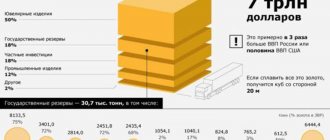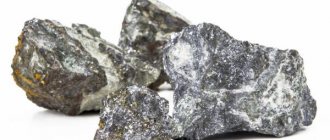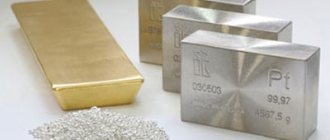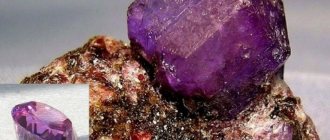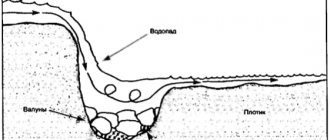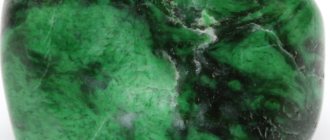Brief description of platinum
Editorial
Promdevelop editorial team
Platinum is a chemical element, a metal (platinum formula - Pt), and, moreover, a very rare one.
- Catalysts
However, this does not negate its wide range of applications - from jewelry to pacemakers. Platinum is a precious metal that is part of the so-called transition group, joining gold, silver and copper. Due to its atomic structure, platinum is able to easily bond with other elements.
What does platinum look like in nature?
In deposits, this metal is found in the form of granular formations of steel, silver with a white or yellowish tint, depending on the composition of the substance.
There are large platinum nuggets weighing up to 9 kilograms. Small cubic crystals are found much less frequently.
Pure substances are practically never found in nature; more often they are present in rocks in the form of various alloys.
Chemical and physical properties
This element belongs to the noble metals, since it is inert towards most known acids and alkalis:
- At room temperature it reacts with aqua regia.
- It is dissolved by liquid bromine and heated sulfuric acid of high concentration, but the reaction proceeds slowly.
Platinum is capable of creating hundreds of complex compounds, which makes it one of the most active catalysts for chemical reactions, while its composition remains unchanged.
This metal has a high density - a cube with sides measuring 1 cm will weigh 21-21.5 grams.
This is a refractory substance, its melting point is 1768 ° C, while it is very plastic, malleable and can be easily forged.
The process of formation in nature
The main theory is that the platinum group elements were formed during a colossal cosmic explosion and were in a molten state in the substance that later turned into the core of our planet.
Platinum
Platinum is a chemical element, a metal. In the periodic system of chemical elements it is in the 10th group, 6th period, with atomic number 78 and is designated Pt (from the Latin Platinum).
The lustrous, silvery-white precious metal is one of four precious metals that are hallmarked. Native platinum is mined in mines. The first production of metal from ore in powder form began in 1805 by the English scientist W. H. Wollaston.
Platinum black is a fine powder of platinum obtained by reducing its compounds.
Physical properties The melting point of platinum is 1768.3 °C, the boiling point is 3825 °C. Platinum is one of the heaviest metals, its density is 21.09–21.45 g/cm³ (atomic density 6.62⋅1022 at/cm³). Brinell hardness - 50 kgf/mm² (Mohs 3.5). Electrical resistivity - 0.098 µOhm m (at 0 °C).
Chemical properties Platinum is more chemically stable compared to palladium and is one of the most inert metals. At room temperature it reacts with aqua regia, slowly dissolves in hot concentrated sulfuric acid and liquid bromine, but does not interact with other mineral and organic acids.
When heated, platinum reacts with halogens (especially in the presence of alkali metal halides), sodium peroxide, alkalis, sulfur, selenium, tellurium, carbon and silicon. When heated, platinum reacts with oxygen and forms volatile oxides.
In its compounds, platinum exhibits almost all oxidation states from 0 to +6, of which +2 and +4 are the most stable. The formation of numerous complex compounds is characteristic, many of which bear the names of the chemists who studied them - salts of Coss, Magnus, Peyron, Zeise, Chugaev, etc. A great contribution to the study of platinum compounds was made by the Russian chemist L. A. Chugaev (1873−1922) - the first director of the Institute for the Study of Platinum, created in 1918.
Platinum, like palladium, is capable of dissolving molecular hydrogen, but the volume of absorbed hydrogen and the ability to release it when heated is less in platinum.
Alkaline hydrolysis of chloroplatinates produces platinum hydroxides, which exhibit amphoteric properties.
Platinum hexafluoride is one of the strongest oxidizing agents among all known chemical compounds, capable of oxidizing oxygen and xenon molecules. The compound is obtained under pressure at a temperature of 1000 °C. Fluoridation of platinum at normal pressure and temperature of 350–400 °C produces platinum(IV) fluoride.
It was with the help of platinum hexafluoride that Canadian chemist Neil Bartlett prepared the first true chemical compound of xenon (Xe[PtF6]) in 1962. This discovery marked the beginning of the chemistry of noble gases.
Platinum is an active catalyst for many chemical reactions. This property is widely used in the chemical industry.
In 1821, the German chemist I. W. Döbereiner discovered that platinum black promotes the occurrence of a number of chemical reactions, while the platinum itself does not undergo changes. For example: platinum black oxidized vapors of wine alcohol (ethanol) to acetic acid already at ordinary temperatures. Two years later, Döbereiner discovered the ability of spongy platinum to ignite hydrogen at room temperature. Explosive gas (a mixture of hydrogen and oxygen) upon contact with platinum black or spongy platinum leads to a combustion reaction. The reaction is accompanied by the release of a large amount of heat, the platinum sponge becomes hot and an explosion of detonating gas occurs. Based on his discovery, Döbereiner designed the “hydrogen flint”. This device was widely used to create fire before the invention of matches.
Platinum nugget
Monetary function of platinum Platinum, gold and silver are the main metals that perform a monetary function. However, platinum began to be used for making coins several thousand years later than gold and silver. The world's first platinum coins were issued and circulated in the Russian Empire from 1828 to 1845.
Minting began with coins with a denomination of three rubles. In 1829, platinum “duplons” (six-ruble coins) were established, and in 1830, “quadruples” (twelve-ruble coins). In total, 1,371,691 pieces of three-ruble coins were minted, and 14,847 pieces of six-ruble coins were minted. and twelve-ruble - 3,474 pcs.
In 1846, the minting of platinum coins was stopped, although by this year the production of Ural platinum amounted to about 2,000 poods or 32,000 kg, of which 14,669 kg were minted into coins. A huge amount of platinum, accumulated at the St. Petersburg Mint, partly in the form of coins, and partly in unprocessed form (according to various sources, from 720 to 2,000 poods), was sold to the English company Johnson, Matte and Co. As a result, England, which did not mine a single gram of platinum, had a monopolist in this industry for a long time.
In the Soviet Union, commemorative anniversary coins made of platinum were issued from 1977 to 1991. A total of 11 different coins with a face value of 150 rubles were issued. The first issue was timed to coincide with the 1980 Olympics in Moscow. Platinum coins currently issued by different countries are investment coins.
In the period from 1992 to 1995, investment platinum coins in denominations of 25, 50 and 150 rubles were issued by the Bank of Russia.
Biological role and physiological action Like all platinoids, platinum does not play a pronounced biological role in the human body. In its pure form, the metal is non-toxic, but some of its compounds (for example, platinum hexafluoride) are very poisonous. Mining and production Platinum was not known in the Old World and until 1748 it was mined and produced only in America. Platinum brought to Europe cost half as much as silver, since it was not widely used.
Jewelers soon learned to alloy platinum, which was then cheap, with gold, and since the density of platinum is higher than that of gold, minor additions of platinum made it possible to produce fakes that could not be distinguished from gold items. This kind of counterfeit became so widespread that the Spanish king ordered the import of platinum to be stopped and the remaining reserves to be drowned in the sea. This law lasted until 1778.
However, some modern jewelers object to this version, arguing that producing an alloy of platinum with a melting point of 1768°C and fusible gold (1064.18°C) is not such an easy task. However, the boiling point of gold (2856°C) is significantly higher than the melting point of platinum, so it is obvious even to a non-specialist that the process cannot be considered completely impossible. Rather, our contemporaries underestimate the level of skill of jewelers of the past.
After the law was repealed, there was little demand for platinum; it was used mainly to create chemical equipment, devices and as catalysts. The platinum mined in America was sufficient for these purposes. There was no significant industrial production to speak of.
In 1819, platinum was first discovered in the Urals near Yekaterinburg, and in 1824 platinum placers were discovered in the Nizhny Tagil district. The explored reserves of platinum were so large that the Russian Empire almost immediately took first place in the world in its production. And by the end of the century, 40 times more platinum was mined in Russia than in all other countries of the world. Moreover, it was also presented with very weighty nuggets. For example, one of the nuggets found in the Urals had a mass of 9.639 kg (it was subsequently melted down).
By the end of the 19th century, the Russian Empire was mining 4.5 tons of platinum per year.
By the mid-19th century, extensive research into platinum refining had been carried out in England and France. In 1859, French chemist Henri Etienne Sainte-Clair Deville first developed an industrial method for producing pure platinum ingots. From that time on, almost all the platinum mined in the Urals was bought up by English and French companies (in particular, Johnson, Mattei and Co.). Later, American and German enterprises joined the purchase of Russian platinum.
Even when active platinum exports developed, most of the platinum mined in Russia did not find worthy use. Therefore, starting in 1828, at the proposal of the Minister of Finance Yegor Kankrin, the Russian Empire began to issue platinum coins in denominations of 3, 6 and 12 rubles. At the same time, the 12-ruble platinum coin had a mass of 41.41 g, and the silver ruble coin contained 18 g of pure silver. That is, in terms of metal value, platinum coins were 5.2 times more expensive than silver coins. From 1828 to 1845, 1,372,000 three-ruble coins, 17,582 six-ruble and 3,303 twelve-ruble coins with a total weight of 14.7 tons were issued. The main benefit from the mining was received by the owners of the mines - the Demidovs.
In 1845, at the insistence of the new Minister of Finance Fyodor Vronchenko, the production of platinum coins was stopped and they were withdrawn from circulation. The main version of these urgent measures is considered to be an increase in European prices for platinum, as a result of which the cost of the metal in coins began to significantly exceed their face value. After the cessation of minting platinum coins, metal production in Russia fell 20 times. However, by 1915, the Russian Empire accounted for 95% of the world's platinum production, with Colombia producing the remaining 5%. Moreover, almost all Russian platinum was exported. For example, in 1867, England bought up the entire reserve of Russian platinum (more than 16 tons).
In the 1930s, Canada became the second largest producer of platinum in the world, and after World War II, this position was taken by South Africa, which contains the main explored reserves of the world's platinum today - about ninety percent.
In 2014, 161 tons of platinum were mined worldwide. Production leaders: South Africa - 110.0 tons, Russia - 25.0 tons, Zimbabwe - 11.0 tons, Canada - 7.2 tons, USA - 3.7 tons.
The leader in platinum production in Russia is MMC Norilsk Nickel. In addition, on the territory of the Khabarovsk Territory there is the Konder mine, which was the world's largest alluvial platinum deposit. The development of the mine is carried out by the Amur Mining Artel (part of the Group).
Use Back in the first quarter of the 19th century, platinum began to be used in Russia as an alloying additive for the production of high-strength steels.
Platinum is widely used as a catalyst. Most often in an alloy with rhodium, and also in the form of platinum black.
Platinum is used to make vessels and stirrers used in the melting of optical glasses, laboratory glassware (crucibles, spoons, etc.) that are resistant to chemical attack and strong heat, distillation retorts for the production of acids, and special mirrors for laser technology.
For the manufacture of permanent magnets with high coercive force and residual magnetization (an alloy of three parts of platinum and one part of cobalt PlK-78).
For the manufacture of durable and stable electrical contacts in the form of alloys with iridium, for example, contacts of electromagnetic relays (alloys PLI-10, PLI-20, PLI-30). Galvanic coatings.
Platinum is used to make: resistance thermometers, heating elements of resistance furnaces, insoluble anodes (in electroplating), coatings for microwave technology elements (waveguides, attenuators, resonator elements), electrodes for the production of perchlorates, perborates, percarbonates, peroxodusulfuric acid. In fact, the use of platinum determines the entire world production of hydrogen peroxide: electrolysis of sulfuric acid - peroxodisulfuric acid - hydrolysis - distillation of hydrogen peroxide.
The precious metal is used in jewelry and dentistry.
Platinum compounds (mainly amminoplatinates) are used as cytostatics in the treatment of various forms of cancer. Cisplatin (cis-dichlorodiammineplatinum(II)) was the first to be introduced into clinical practice, but more effective diammineplatinum carboxylate complexes, carboplatin and oxaliplatin, are currently used.
Platinum and its alloys are widely used in jewelry, as well as in the manufacture of insignia for outstanding services: the image of V.I. Lenin on the Soviet Order of Lenin is made from platinum; The Soviet Order of Victory, the Order of Suvorov, 1st class, and the Order of Ushakov, 1st class, were made from it.
Evgeniy Lavrinenko (SM)
How are platinum veins found?
Such veins were often found in streams, on the banks of rivers, and also in places where other minerals were mined.
In Russia, platinum was discovered in the Urals and was considered an admixture with gold in placer mines. But due to its refractoriness, this metal did not find use for a long time and was simply thrown away or sent to waste dumps.
Satellites of platinum
As a rule, this metal is never found separately. His constant companions are:
- iron;
- rhodium;
- ruthenium;
- palladium;
- iridium;
- osmium.
Rarer satellites are nickel and copper.
Where is platinum found in nature?
This metal is mined mainly in complex deposits. It looks like a heap of small particles and ingots. The platinum vein, like gold, can be found in typical igneous igneous rocks.
Types of deposits
The deposits in which this element is mined are of two types:
- indigenous (primary);
- loose (secondary).
In primary deposits, platinum, along with other platinum group metals, is obtained as a by-product from the mining of sulfides, copper and nickel. There are vein inclusions in the rock that go deep into the earth's crust.
Placers are the result of the destruction of a bedrock deposit and are often located at a short distance from it. Here ingots and small particles in the form of sand and flakes or plates are mined.
This element is very rarely found in quartz vein formations.
Extraction methods
Placers are developed by washing soil containing precious metal. Heavy particles settle to the bottom, and waste rock is washed away with water. Platinum obtained from alluvial deposits is called raw.
In complex deposits, the main source of platinum is the slurry remaining after the extraction of nickel and copper from ore. The sludge is subjected to additional processing - roasting and repeated electrolysis. After which the content of precious metals in such ore reaches 60% of the total mass.
The method of subsequent purification (refining) is also used for raw platinum. It consists of double treatment of the substance with aqua regia, and then calcination at a temperature of 800 to 1000 °C.
Production volumes
Today, the total world production of platinum is about 184 tons per year. About 60 more tons of precious metal are obtained as a result of processing.
Chemical properties
The first chemical studies were carried out back in 1741 by the British scientist Charles Wood. It was he who first called this element a metal (the eighth among those known at that time), and described some of the characteristics of platinum.
Reactivity
The history of platinum includes a test of "nobility". The metal passed it thanks to the research of British chemists William Wollaston and Smithson Tennant. At the beginning of the 19th century, they tried to dissolve purified platinum in a mixture of nitric and hydrochloric acids. After the metal was separated from the rest of the solution, palladium, rhodium, osmium, iridium, and later ruthenium were found in the waste. It is characteristic that mining today is carried out using a similar technology: samples containing the element are dissolved in an acidic environment, separated from the rest of the solution and by-products, and melted at very high temperatures to obtain pure metal.
Areas of application
Recently, platinum has been widely used:
- In the automotive industry, in particular in the production of catalytic exhaust gas converters. The alloy is used in electronics to create high-precision and optical devices.
- In the petrochemical industry, this metal is necessary to create high-octane gasoline, rubber, the vast majority of monomers and other synthetic materials.
- In medicine, this element is used to create devices and tools. Platinum is necessary in the production of hydrogen peroxide, antibacterial and antiviral drugs. It is also used in the treatment of cancer.
- The space program and nuclear energy cannot operate without platinum. All of the above industries absorb about 60% of the precious metal.
- About 30% of precious metal is consumed in the manufacture of jewelry.
- The remaining 10% serves as a source of financial investment.
History of discovery
The ancient Egyptians were the first to mine and use platinum metal - they created jewelry from it. For example, in the ruins of the city of Thebes, a case created in the 7th century BC was found. e. It contained a piece of mineral rich in iridium.
In the 1st century AD e. The Spaniards and Portuguese began to show increased interest in the mining of “white lead” or “white gold”. Pliny the Elder wrote that the metal was mined in northwestern Spain and Portugal. It was collected during the washing of ordinary gold and smelted separately. But soon platinum mining in Europe came to a standstill. After the fall of the Roman Empire, they stopped mining it, and jewelers lost interest in it.
In the New World, the Inca and Chibcha tribes held the secrets of smelting, refining and processing. They created jewelry and other items from the material.
It is believed that the first Europeans to learn about platinum were the conquistadors who arrived in South America in the mid-16th century. In 1557, a book was written where the first mention of a metal that cannot be melted took place.
Platinum was received by the Spanish invaders with distrust and even disdain. The white metal, similar to silver, could not be melted, and therefore was not used for a long time and was valued 2 times lower than silver. Even the name “Platina” itself comes from the Spanish “Plata” - “silver”, that is, the full name can be referred to as “little silver”, “little silver”.
In the 30s of the 18th century, the Spanish king issued a decree banning the import of platinum into the country. The reason was simple: jewelers quickly realized that the cheap metal was denser than gold, and began adding it to jewelry, creating fakes. The metal that had already arrived was ordered to be drowned, and the metal that came across during gold mining was to be swept into the river. The order was canceled only 40 years later: the Madrid authorities were going to use platinum to counterfeit silver and gold coins. In addition, the substance was used in small quantities in the production of chemical equipment and as a catalyst.
The metal came to Great Britain with the mathematician and navigator A. de Ulloa in the middle of the 18th century. He also described platinum on his journey. At the end of the 18th century, Lavoisier, the founder of modern chemistry, included the substance in the list of simple substances, and at the beginning of the next century, the chemist Wollaston obtained platinum in its pure form.
The richest deposits
South Africa has the richest reserves of platinum on the planet, and the largest deposit of all currently existing is also located there.
In the world
The most famous and promising mines today:
- Merensky Reef, South Africa;
- Great Dike, Zimbabwe;
- Stillwater, USA;
- Lac Deux Iles, Canada;
- Sudbury, Canada.
In Russia
The world's largest alluvial platinum deposit (Conder) is located in Russia.
Metal mining is carried out mainly in the Khabarovsk Territory, Kamchatka and the Sverdlovsk Region. The following deposits are especially noteworthy:
- Norilsk group, Krasnoyarsk region;
- Fedorova Tundra, Murmansk region;
- Conder, Khabarovsk Territory;
- Lobva, Sverdlovsk region;
- Levtyrinyvayam, Kamchatka;
- Vyysko-Isovsky, Sverdlovsk region.
Experts also highly appreciate the proven reserves that are located in Karelia, the Kola Peninsula and the Voronezh region.
All platinum mined on the territory of the Russian Federation falls on the share of MMC Norilsk Nickel. It is also one of the largest PGM producers in the world.
What is the value of the metal?
A beautiful and noble metal, platinum is used in jewelry and for minting coins. This is a banking and exchange metal, the bullion of which allows you to store and operate capital. Platinum is used much more widely in technology .
Application in technology is based on some
unique properties of platinum:
- the high inertness of this metal, immunity to the effects of many aggressive substances;
- excellent electrical conductivity and ability to conduct heat;
- the ability to act as a catalyst that initiates many important chemical processes.
Knowledge of the scope of platinum is also important in recycling. For this recycling strategy to be effective, it is good to properly plan and organize its collection and sorting . It is important to properly coordinate the extraction of platinum from secondary raw materials, because along with it, the part often contains other precious metals that also need to be extracted.
Here are several groups of products, materials and substances in which platinum is used. Such substances and products are an important source of returning platinum to economic circulation:
- automobile catalysts;
- radio components;
- elements of electrical equipment;
- parts made of pure platinum in devices and equipment - mesh, wire, etc.
The recovery of metals from recycled materials is more effective the larger volumes of such material are processed.
To extract platinum from each type of raw material, its own technologies have been developed .
Price per 1 gram today
Currently, the demand for platinum is growing steadily, mainly due to the automobile industry. Daily platinum quotes on the exchange are available to our visitors online.
Platinum | RUB | 1 Gram
USDRUB*PL1!*10000000/311034768 chart provided by TradingView
Platinum | USD | 1 Gram
Chart PL1!*10000000/311034768 courtesy of TradingView
Platinum | RUB | 1 oz
USDRUB*PL1 chart! provided by TradingView
Platinum | USD | 1 oz
Schedule PL1! provided by TradingView
You can also take consolidated data from the interactive table.
